Table of Contents
Tired of the daily "what's for dinner?" drama? Do you find yourself reaching for takeout menus instead of healthy options? I get it. Life gets busy, and cooking healthy meals often falls to the bottom of the to-do list. That's where the magic of meal prep comes in, especially when we’re talking about delicious and easy chicken and veggie meal prep ideas. This isn't about spending hours in the kitchen every Sunday. It's about making smart choices that save you time, money, and maybe even a little bit of your sanity. Imagine opening your fridge to find a ready-to-go, nutritious meal waiting for you. This article will walk you through why meal prepping with chicken and veggies is awesome, provide simple steps for success, share some mouthwatering recipes, and offer tips to make your meal prep routine a breeze. Get ready to transform your approach to healthy eating with these simple, yet effective, ideas! We'll tackle everything from basic planning to storage, so you can become a meal prep master in no time.
Why Chicken and Veggie Meal Prep is a Game Changer
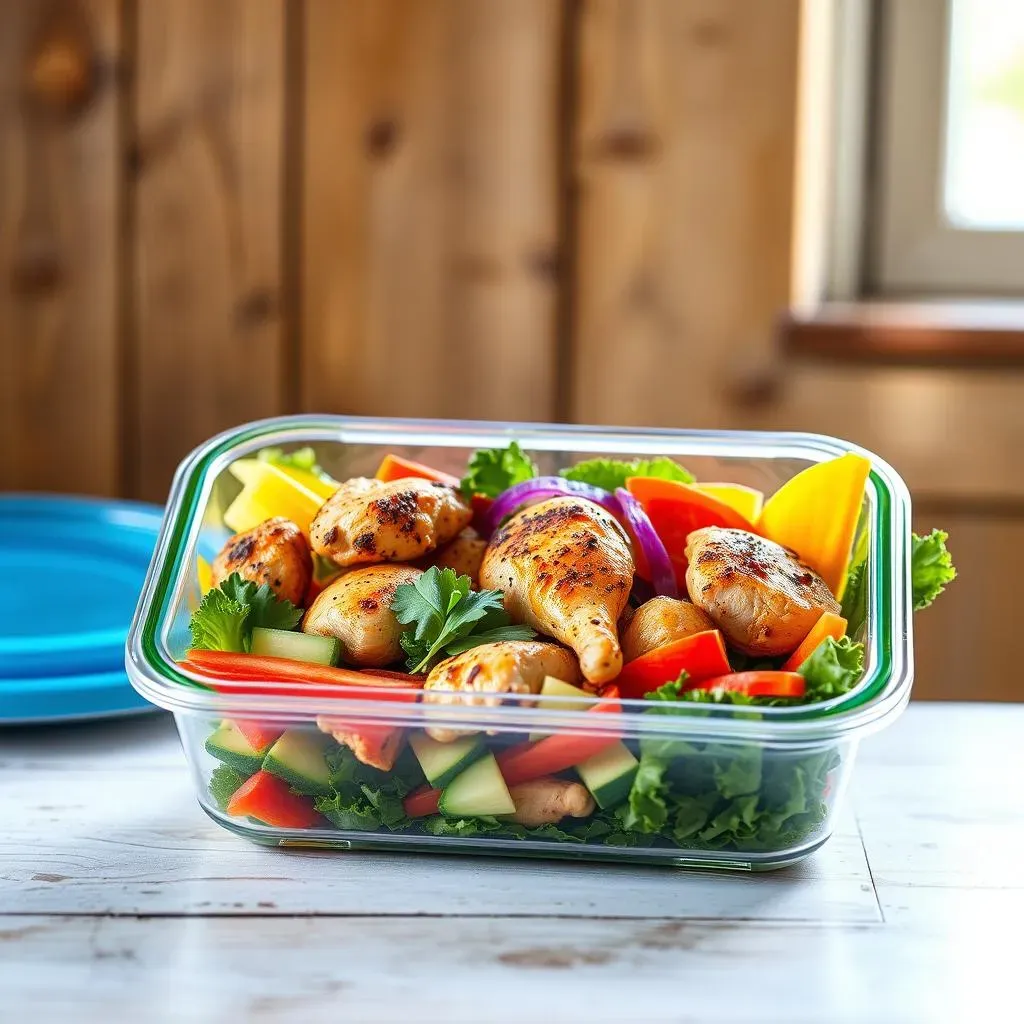
Why Chicken and Veggie Meal Prep is a Game Changer
Time Savior
Let's face it, we're all juggling a million things. Between work, school, family, and trying to have some semblance of a social life, cooking a healthy meal every night can feel like a Herculean task. That's where meal prepping swoops in like a superhero. By dedicating just a bit of time to prepare your meals ahead of time, you’re essentially giving yourself the gift of time back during the week. No more last-minute dashes to the grocery store or impulse fast-food orders. You can kiss those stressful dinner dilemmas goodbye because you'll have a delicious, pre-made meal waiting for you.
Think of it like this: instead of staring blankly into your fridge at 7 PM, wondering what to make, you can simply grab a container of prepped chicken and veggies. It's not just about saving time; it's about reclaiming your evenings. This way you can finally relax or actually get to that hobby you have been putting off.
Wallet-Friendly
Eating healthy doesn't have to break the bank. In fact, meal prepping with chicken and veggies can actually save you a significant amount of money. How? Well, when you plan ahead, you're less likely to buy expensive takeout or make impulsive grocery purchases. Instead, you can buy your ingredients in bulk, which often comes with a lower price tag. Plus, you're using everything you purchase, reducing food waste, and putting more money back into your pocket. It's like giving yourself a little raise.
Consider this: a single takeout meal can easily cost you $15-$20. If you do that a few times a week, the costs add up quickly. With meal prep, you can get multiple meals out of that same amount of money, and they're often healthier too. It's a win-win situation for your body and your bank account.
Benefit | Explanation |
|---|---|
Time Savings | Pre-made meals mean no last-minute cooking stress. |
Cost Savings | Bulk buying and less takeout reduces expenses. |
Healthier Eating | You control ingredients and portions. |
Health Boost
One of the biggest benefits of chicken and veggie meal prep ideas is that it puts you in control of your diet. When you're prepping your own meals, you get to choose exactly what goes into them. This means you can load up on nutritious vegetables and lean protein while cutting out the processed foods, excess salt, and unhealthy fats that often sneak into restaurant meals. It's like giving your body a big, healthy hug.
You know exactly what you're eating, no hidden ingredients or surprises. Plus, it's a great way to make sure you're getting a balanced diet with plenty of fiber, vitamins, and minerals. This can lead to more energy, better digestion, and an overall improved sense of well-being. So, by spending just a little time prepping, you're making a long-term investment in your health.
Simple Steps for Perfect Chicken and Veggie Meal Prep
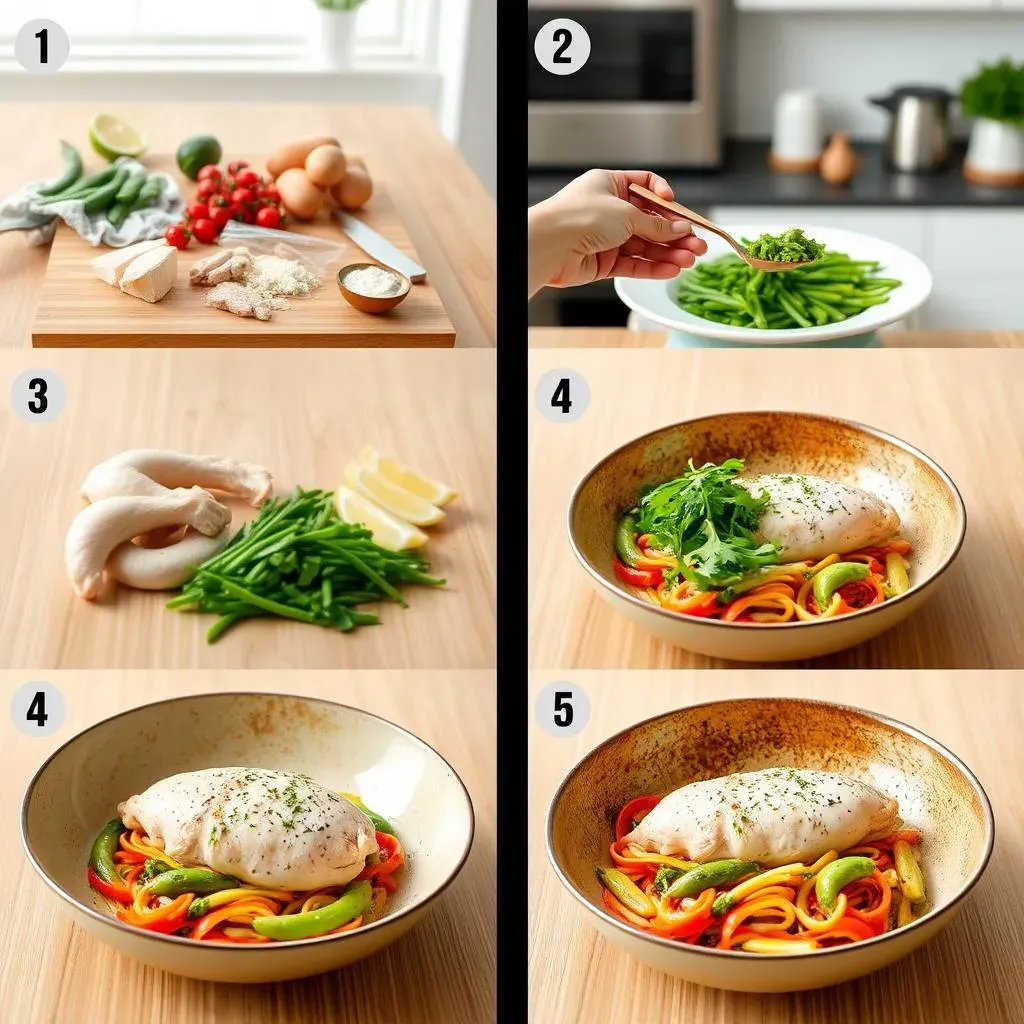
Simple Steps for Perfect Chicken and Veggie Meal Prep
Okay, so you're sold on the idea of meal prepping, but maybe you're feeling a bit overwhelmed about where to start? Don't worry, I've been there. It's not as complicated as it seems, I promise. The key to successful meal prep is breaking it down into simple, manageable steps. Think of it like building with Lego bricks – you start with the basic pieces, and before you know it, you've created something awesome. We’re going to keep it chill and straightforward, focusing on the essentials to make your chicken and veggie meal prep a total breeze. It's all about planning, prepping, and packing like a pro.
First, let’s talk planning. This is where you decide what you're going to eat for the week, and it’s honestly the most important step. Take a few minutes to sit down and think about your schedule and what you're in the mood for. Then, create a simple meal plan. You don't have to get super fancy; a basic plan is better than no plan at all. Next, you'll need a solid grocery list. Once you have a plan, making your list is a piece of cake. This step ensures you're only buying what you need, avoiding those last-minute impulse buys that can derail your healthy eating goals. So, before you even think about touching a knife, you need a plan.
Step | Action |
|---|---|
1. Plan | Decide what meals you'll make for the week. |
2. List | Create a grocery list based on your meal plan. |
Delicious Chicken and Veggie Meal Prep Recipes

Delicious Chicken and Veggie Meal Prep Recipes
Alright, let’s get to the good stuff: Delicious Chicken and Veggie Meal Prep Recipes! This is where the magic happens, where your planning turns into actual, tasty meals. I'm not talking about bland, boring diet food here. We’re talking about vibrant, flavorful combinations that you'll actually look forward to eating. Think of it like this: your meal prep containers are canvases, and you’re the artist, creating edible masterpieces. The goal is to make meals that are not only healthy and convenient but also exciting and delicious. So, let’s dive into some recipes that are sure to spice up your meal prep game. These are some of my go-to options that are easy to customize based on what you have on hand or what you are in the mood for.
First up, let's talk about the classic sheet pan approach. It's a lifesaver for busy weeknights. You just toss your chicken and veggies on a pan, season them up, and bake. It's ridiculously simple and requires minimal cleanup. For example, you could try a Mediterranean-inspired version with chicken, bell peppers, red onion, zucchini, and a generous drizzle of olive oil, lemon juice, and oregano. Or, maybe a spicy southwest version with chicken, sweet potatoes, black beans, corn, and a dash of chili powder and cumin. The possibilities are endless, and the best part is that you can mix and match based on your preferences. So, let your creativity flow and enjoy the process of creating unique meal prep recipes!
Recipe | Description |
|---|---|
Mediterranean Sheet Pan | Chicken, bell peppers, red onion, zucchini, olive oil, lemon, oregano. |
Southwest Sheet Pan | Chicken, sweet potatoes, black beans, corn, chili powder, cumin. |
Tips and Tricks for Meal Prep Success
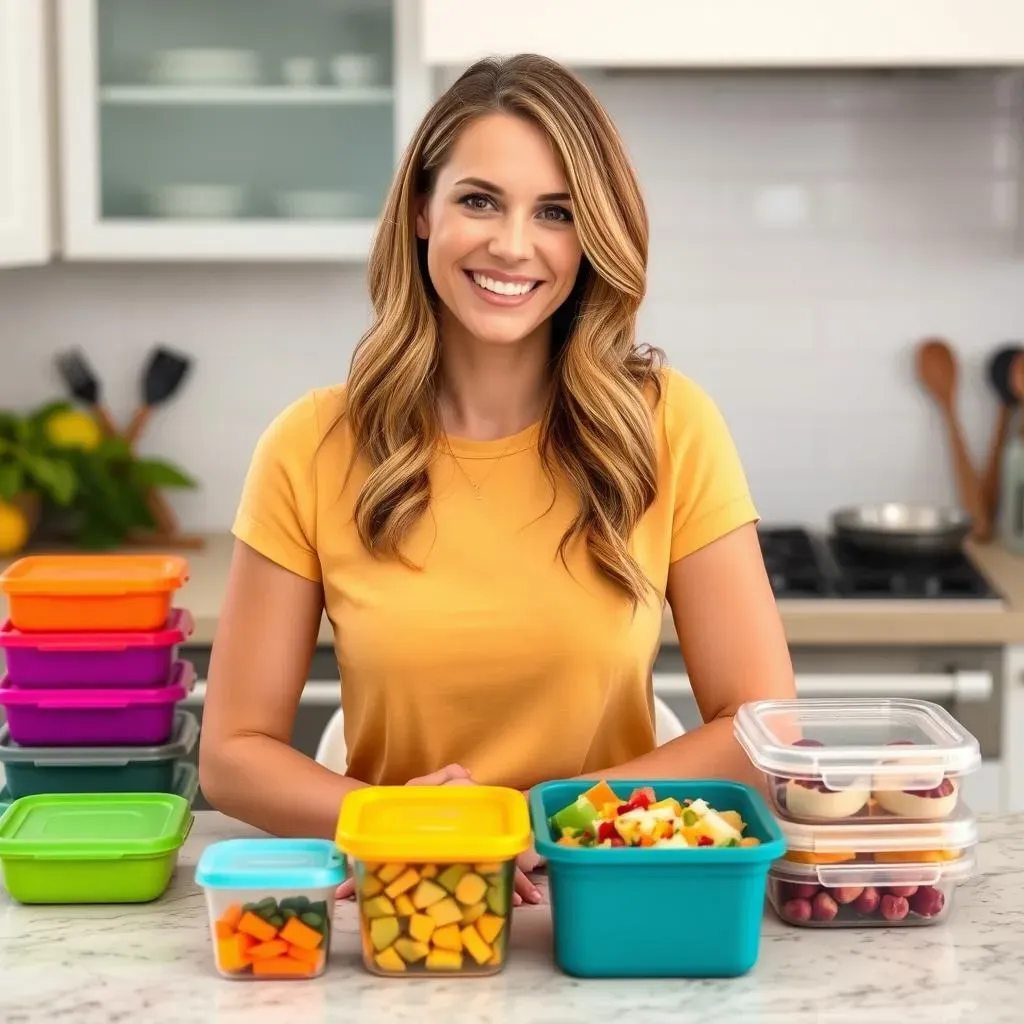
Tips and Tricks for Meal Prep Success
Start Simple and Small
Okay, so you’re ready to dive into meal prep, that's awesome! But, hold on a sec – don't feel like you need to prepare every meal for the entire week right away. That's a recipe for burnout, trust me. When I first started, I tried to prep all my meals for seven days, and it was overwhelming. I ended up with a fridge full of food I was too tired to eat. So, here’s my advice: start with just a few meals or even a couple of days. Maybe try prepping lunches for three workdays, or dinners for two nights. Once you get the hang of that, you can slowly increase the amount you prep. It’s like training for a marathon; you don't start by running 26 miles, right? You build up to it gradually. The same goes for meal prep.
The point is to make it sustainable and enjoyable, not another chore. Start with recipes you already know and love. Don't try to learn a bunch of new complex dishes at the same time you're getting used to the meal prep process. You can always add more variety once you've mastered the basics. This approach will make the whole process much more manageable and less intimidating, and you will be more likely to stick with it in the long run. Think of it as a marathon, not a sprint.
Invest in Good Containers
This might seem like a minor detail, but having good containers is a total game-changer for meal prep. I used to try to get by with mismatched containers from my cabinets, and it was a disaster. They didn't stack well, they leaked, and some of them didn’t even close properly. It was a mess! So, trust me on this one – invest in a good set of containers. I personally prefer glass containers because they’re easy to clean, don’t retain odors, and can go straight from the fridge to the microwave. But, if you prefer plastic, that's totally fine too, just make sure they are BPA-free and microwave-safe.
The most important thing is that they are airtight and stackable. Airtight containers will keep your food fresh for longer, preventing it from getting soggy or stale. Stackable containers will save you a ton of space in your fridge, which is especially important if you’re prepping a lot of meals. Plus, having matching containers just makes your fridge look more organized and aesthetically pleasing, and let's be honest, a little organization can go a long way. So, treat yourself to some good containers; it's an investment in your meal prep success. They are a must-have tool in any meal prepper’s arsenal.
- Glass containers: Easy to clean, no odor retention.
- Plastic containers: BPA-free and microwave-safe.
- Airtight: Keeps food fresh longer.
- Stackable: Saves space in the fridge.
Spice it Up
Don't let your meal preps get boring. I mean, who wants to eat the same bland chicken and veggies day after day? Not me, and probably not you either. The secret to keeping your meal prep interesting is to use a variety of spices and seasonings. Don't be afraid to experiment with different flavors. Try adding some chili powder for a kick, or some cumin for a smoky flavor. A little garlic powder, onion powder, and paprika can also go a long way.
Herbs are also your best friend in the kitchen. Fresh herbs like basil, cilantro, and parsley can add a burst of flavor to your meals. You can also use dried herbs, which are convenient and last longer. The key is to have a well-stocked spice rack and to not be afraid to experiment. You can also add flavor with sauces, like a low-sodium soy sauce, a bit of sriracha, or a homemade vinaigrette. The possibilities are endless. The goal is to create meals that you actually look forward to eating, not something you dread.
Prep Ingredients Separately
This tip might seem a little counterintuitive, but hear me out. Instead of cooking everything together, try prepping your ingredients separately. For example, roast a big batch of chicken, chop your veggies, and then store them in separate containers. This way, you can mix and match your meals throughout the week, which will prevent boredom and keep things interesting. It also gives you more flexibility to create a variety of different dishes, and it prevents some ingredients from getting overcooked or soggy.
Think of it like this: you’re creating a meal prep buffet where you can choose exactly what you want to eat. You can have a chicken and veggie bowl one day, a chicken and veggie salad the next, and maybe a chicken and veggie stir-fry the day after that. The possibilities are endless. This method also makes it easier to customize your meals based on your dietary needs and preferences. So, instead of having pre-made meals that you have to eat as is, you have a variety of different components that you can combine in different ways. It’s all about keeping things fresh and exciting.
Tip | Description |
|---|---|
Spice It Up | Use a variety of spices and herbs to keep meals interesting. |
Prep Separately | Store cooked ingredients separately for more flexibility. |
Customizing Your Chicken and Veggie Meal Prep
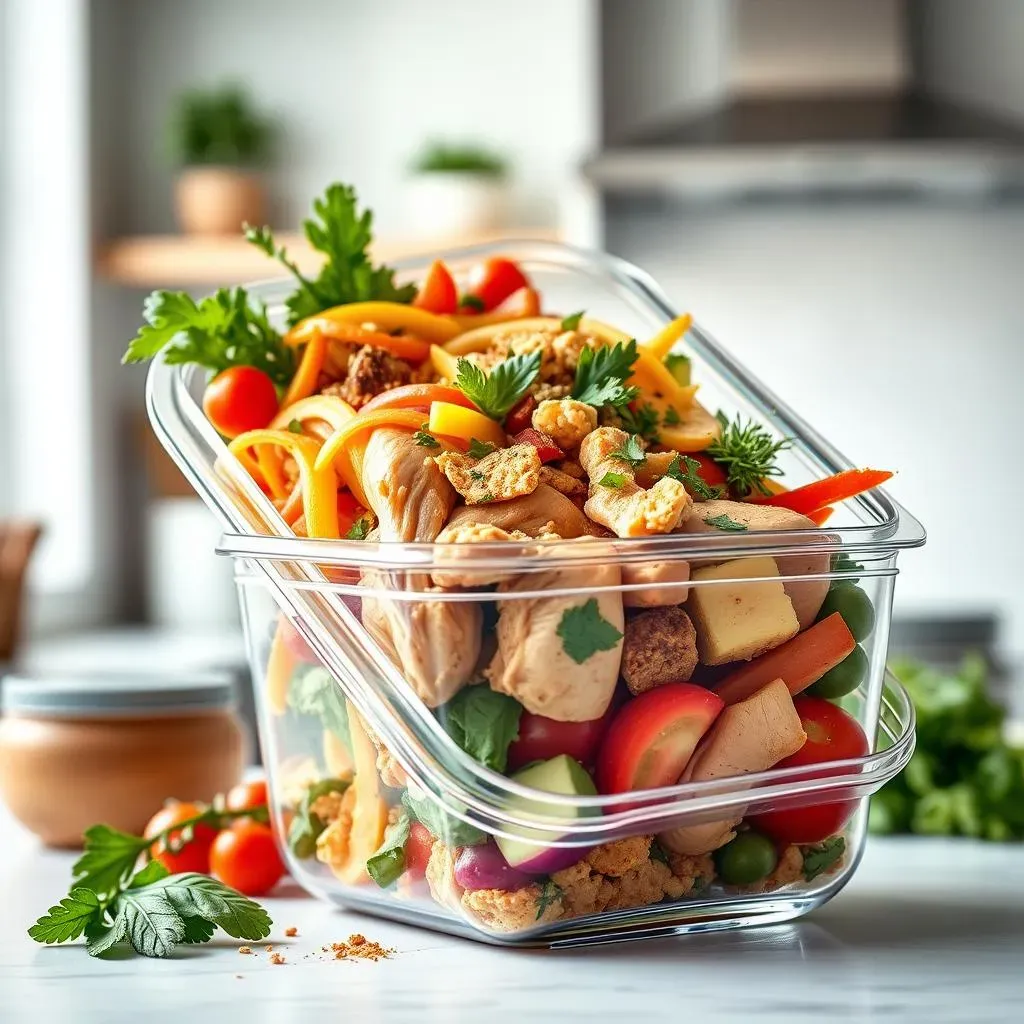
Customizing Your Chicken and Veggie Meal Prep
Swap Your Proteins
So, you're getting the hang of meal prep, which is fantastic! But, what if you're not always in the mood for chicken? No problem at all. The beauty of meal prep is that it's totally flexible. You can easily swap out the chicken for other lean proteins like turkey, fish, tofu, or even lentils. Think of it like this: chicken is just one character in your meal prep story. You can bring in new characters to keep things exciting. If you want to try a fish option, salmon is a great choice, it’s packed with healthy fats and flavor. For a vegetarian option, tofu or lentils can provide a great source of protein and fiber. The key is to choose proteins that you enjoy and that fit your dietary needs. Don't be afraid to experiment and mix things up.
It's all about finding what works best for you and your tastes. Maybe you want to do chicken one week and then switch to fish the next. Or, you could do a mix of different proteins throughout the week. Just remember that the cooking time might vary depending on the type of protein you choose. For example, fish cooks much faster than chicken, so you might need to adjust your cooking time accordingly. It’s all about making meal prep work for you and your lifestyle. So, go ahead and explore the world of proteins!
Veggies Your Way
Now, let's talk about veggies. Just like proteins, you have a ton of options when it comes to vegetables. Don't feel like you're stuck with the same old broccoli and carrots. The world of veggies is your oyster! You can use any kind of vegetable that you like, or that is in season or available at your local grocery store. Think about what you enjoy and what provides the nutrients you need. Maybe you want to add some roasted sweet potatoes for a bit of sweetness, or some bell peppers for color and crunch. How about some leafy greens like spinach or kale for an extra boost of vitamins and minerals?
The key is to use a variety of different vegetables to keep things interesting and to make sure you're getting a wide range of nutrients. You can also try different cooking methods. For example, you can roast some veggies, steam others, and even add some raw vegetables to your salads. It’s all about adding variety and flavor to your meals. Don’t be afraid to experiment with different combinations and find what you enjoy the most. So, next time you're at the grocery store, take a look at all the different veggies that are available and pick some that you haven't tried before. It’s all about making your meal prep your own.
Customization | Options |
|---|---|
Proteins | Turkey, fish, tofu, lentils |
Veggies | Sweet potatoes, bell peppers, spinach, kale |
Storing and Reheating Your Prepped Meals
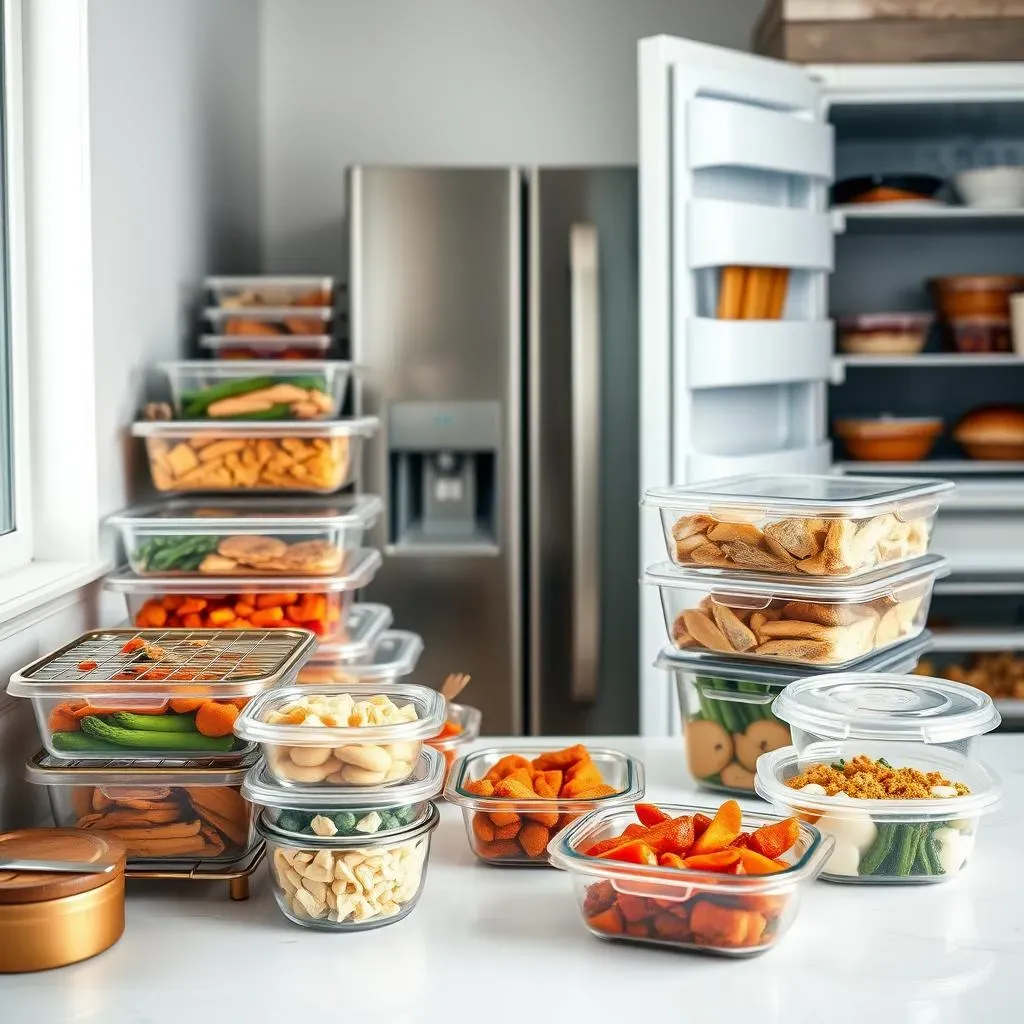
Storing and Reheating Your Prepped Meals
Cooling Down Quickly
Alright, so you've prepped all of your delicious chicken and veggie meals, now what? Well, first things first, you need to let your food cool down before you pop it in the fridge. I know, it can be tempting to just throw everything in while it’s still hot, but that’s a big no-no. Putting hot food in the fridge can actually raise the temperature inside, which can create a breeding ground for bacteria. Plus, it can make your other food items warm, which is just not ideal. The best practice is to let your food cool down to room temperature before you transfer it to your storage containers. You can speed up the cooling process by dividing your food into smaller portions and placing them on a wire rack. This will allow the heat to escape more quickly and will prevent your food from getting soggy.
Think of it like this: you wouldn't put a hot cup of coffee in the fridge, right? The same logic applies to your meal preps. You need to give them time to cool down before you transfer them to the cold environment of your fridge. Once your food has cooled down, you can then transfer it to your airtight containers. This step is crucial for keeping your meals fresh and safe to eat. So, patience is key when it comes to cooling down your meal preps. It's all about the little details that make a big difference.
Fridge and Freezer Tips
Now that your food is cooled, it’s time to talk storage. For meals you plan to eat within the next 3-4 days, the fridge is your best friend. Make sure your containers are airtight to prevent your food from drying out or picking up any funky odors. If you are using glass containers, they are also great for stacking, which can save you valuable space in your fridge. For meals you won't be eating within the next few days, the freezer is the way to go. Freezing your meals will keep them fresh for much longer. Make sure to label your containers with the date you prepped them, so you know how long they've been in the freezer. This will help you keep track and ensure you are eating your food while it is still fresh.
When you are freezing your meals, it's important to use freezer-safe containers. This will prevent your containers from cracking or breaking while they are frozen. It's also a good idea to let your meals thaw in the fridge overnight before you reheat them, or if you are short on time you can use your microwaves defrost function. This will ensure that your meals reheat more evenly and will prevent them from getting mushy. So, whether you're storing your meals in the fridge or the freezer, proper storage is key to keeping them fresh, safe, and delicious.
Storage | Duration | Tips |
|---|---|---|
Fridge | 3-4 days | Use airtight containers, stack neatly. |
Freezer | Up to 2 months | Use freezer-safe containers, label with date. |
Reheating Like a Pro
Okay, your meals are stored, and you’re ready to eat. But, how do you reheat them without ruining all of your hard work? Well, the microwave is often the easiest and most convenient option, especially if you’re at work or in a hurry. When microwaving, it's a good idea to add a small amount of water to your container. This will help to prevent your food from drying out while it's being reheated. Also, remember to cover your container with a microwave-safe lid or plastic wrap. This will help to trap the steam and ensure your food is reheated evenly. It's also a good idea to stir your food halfway through the reheating process to ensure that it's heated evenly throughout.
If you prefer not to use a microwave, you can also reheat your meals in the oven or on the stovetop. For the oven, preheat it to 350°F (175°C) and place your food in an oven-safe dish. Cover it with foil and bake until it's heated through. For the stovetop, you can place your food in a pan over medium heat. Add a little water or broth to keep it from sticking and stir frequently. The key is to reheat your food gently and evenly, without overcooking it. It's all about finding the method that works best for you and your schedule.
Chicken and Veggie Meal Prep: Frequently Asked Questions
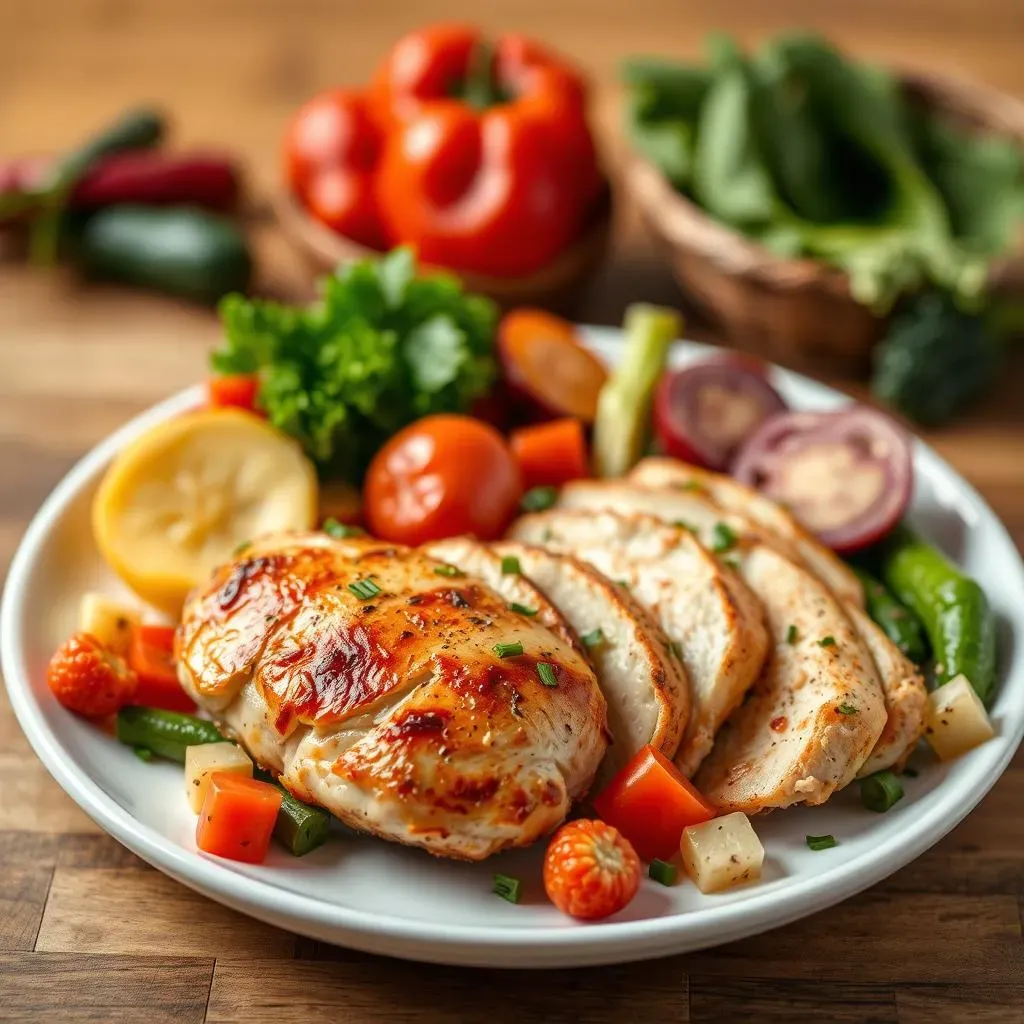
Chicken and Veggie Meal Prep: Frequently Asked Questions
Is Meal Prep Really Worth the Effort?
Okay, so I get it, you might be thinking, "All this planning and prepping seems like a lot of work." And yeah, I won't lie, it does take some time upfront. But, let me tell you, the benefits far outweigh the initial effort. It's like investing in yourself; you put in a little work now, and you reap the rewards later. Think about all the time you spend each week deciding what to eat, going to the grocery store, and cooking meals. Meal prepping consolidates all of that into one or two sessions, freeing up your time during the week. You're basically trading a few hours of work on the weekend for more free time and less stress during the week. Plus, you're saving money and eating healthier. So, is it worth it? Absolutely, in my opinion. It's a total game-changer for anyone trying to eat well and manage their time more effectively.
It's not just about saving time; it's about creating a healthy habit and taking control of your diet. When you have a fridge full of prepped meals, you're less likely to make unhealthy choices or order takeout. You're setting yourself up for success by making the healthy option the easiest option. So, if you're on the fence about meal prepping, I encourage you to give it a try. Start small, be patient with yourself, and see how it can transform your approach to healthy eating. It's an investment in your well-being that will pay off in the long run.
Question | Answer |
|---|---|
Is meal prep worth it? | Yes, the time saved and health benefits outweigh the effort. |
How do I start? | Begin with a few meals and gradually increase as you get comfortable. |
How Long Will My Prepped Meals Last?
This is a super common question, and it's important to know the answer so you don't end up with spoiled food. Generally, meals that are stored in the fridge will last for about 3-4 days. This is why it’s a good idea to prep for the first half of the week, then do another prep session for the second half. If you're planning on eating your meals later than that, it's best to store them in the freezer. When properly stored, frozen meals can last for up to 2 months, sometimes even longer. The key is to make sure your containers are airtight to prevent freezer burn and to label everything with the date you prepped it. You can also use freezer bags instead of containers to save space. If you’re using bags, try to remove as much air as possible before sealing them.
Keep in mind that some foods do better in the freezer than others. For example, cooked chicken and roasted veggies freeze very well, while some leafy greens might become a bit soggy after thawing. So, you might want to adjust your meal prep choices based on how you plan on storing them. If you’re ever unsure, it’s always better to err on the side of caution and eat your meals sooner rather than later. Proper food storage is key for food safety, so always pay attention to those dates and use your best judgment. If something looks or smells off, it’s better to throw it out than to risk getting sick.
Can I Meal Prep with Dietary Restrictions?
Absolutely! One of the best things about meal prep is that it's completely customizable to your dietary needs and preferences. Whether you're vegetarian, vegan, gluten-free, or have other dietary restrictions, you can absolutely meal prep. The key is to choose ingredients that work for you and to be mindful of cross-contamination if you're cooking for others with different dietary needs. For example, if you're gluten-free, you can use rice or quinoa instead of pasta, and if you are vegan, you can use plant-based proteins like tofu or lentils. The possibilities are endless, and you can easily adapt any recipe to fit your needs. It’s all about making your meal prep your own and finding what works best for you.
Don't let dietary restrictions hold you back from enjoying the benefits of meal prep. There are a ton of resources available online for recipes that fit any dietary requirement. You can also tweak existing recipes to make them work for you. The key is to be creative and to not be afraid to experiment. With a little bit of planning and a willingness to adapt, you can absolutely make meal prep work for any dietary restriction. So, embrace your dietary needs and let them guide you in creating healthy and delicious meals that are perfect for you.
- Vegetarian/Vegan: Use plant-based proteins like tofu, lentils, or chickpeas.
- Gluten-Free: Choose rice, quinoa, or gluten-free pasta alternatives.
- Other Restrictions: Always check ingredient labels and modify recipes as needed.